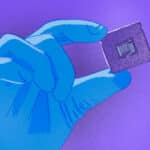
Photonic devices are increasingly present in the gadgets we use every day. Mobile phones rely heavily on displays, video cameras, and optical depth sensing. Virtual, mixed, and augmented reality solutions are based on headsets integrating advanced graphical interfaces. Voice and data encoded in photons are carried by optical fibers and between satellites—communications that can be secured using quantum cryptography that leverages the properties of single photons.
LiDAR lets satellites observe the Earth, and airplanes avoid turbulence. It also helps autonomous vehicles and unmanned aerial vehicles (UAVs) avoid collisions. Advanced imagers make smart cars aware of their constantly changing environment. Infrared imaging enhances night driving and helps firefighters locate victims and dangerous hotspots.
LEDs—another kind of photonic device—illuminate our homes and power our cars’ headlights.
X-ray scanners and Gamma imagers perform safety inspections on freight transiting by sea and air and help diagnose patients in hospitals. Optogenetics is pushing back the frontiers of what we know about the brain. Optical sensors can analyze blood samples for the markers of disease, monitor air quality, and, when integrated into smart watches and other wearables, help improve athletic performance.
Today’s photonics—as it converges with nanoelectronics—has grown into a colossal industry that has become vital to our society.
Photonics R&D at CEA—based on investigations at the scale of a single wavelength of light, an individual photon, a single electron—is a fascinating mix of modern physics and interdisciplinary technological research.





